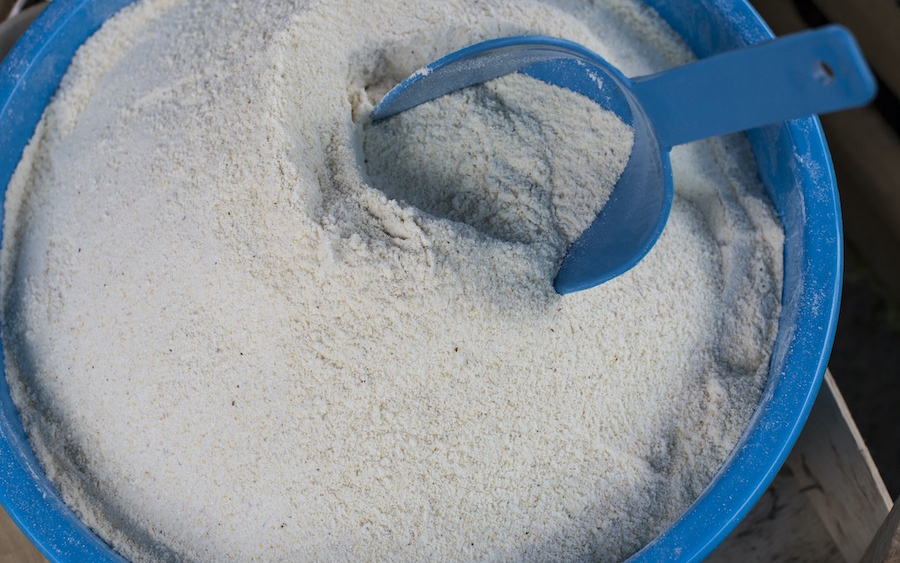
Reducing downtime is a high priority for almost every dry ingredient processing facility. From food grade ingredients to pharmaceutical grade to industrial materials and more, reducing downtime means improving production and reducing errors. With a streamlined process and a few precautions, you can reduce downtime in dry ingredient processing and keep your facility running smoothly.
How to Reduce Downtime in Dry Ingredient Processing
1. Optimize the Mixer
Your mixer is one of the most important pieces of equipment when it comes to optimizing uptime and reducing downtime in dry ingredient processing. When your mixer is outfitted to suit your ingredients, it will work quickly and produce a great product. There are a few ways that you can optimize your mixer so it works continuously, and with minimal downtime.
To optimize your mixer, first assess your ingredients. With a good understanding of how your ingredients flow, whether or not they’ll stick or clump together, and what environmental conditions they might be susceptible to, you and your engineering partners will be able to customize your mixer better.
Running into the same processing problems?
See how to fix them: 8 Key Equipment Decisions to Perfect Your Dry Mix
One of the important customizations to make on your mixer is the discharge gate. A drop-bottom gate, for example, will discharge ingredients quickly, but this isn’t ideal for ingredients that are prone to flushing and aeration. Slide gates or butterfly valves may be better for these ingredients, since they generally have stronger seals, but they won’t discharge as quickly.
If your ingredients are likely to clump together, your mixer may require a stronger motor, or it may need choppers to break up the mixture. Materials that are fragile and might lose their texture in the mixer might benefit from a paddle mixer, or a mixer working at a slower speed. As we’ll discuss in the next section, reducing downtime and increasing productivity doesn’t always mean optimizing speed.
2. Coordinate Process Times
The fastest mixer is not necessarily the best one. If the mixer is idle while the feeder or scales are working, then it’s not reducing downtime. It’s important to coordinate the timing of various processes in order to actually reduce downtime in dry ingredient processing.
For example, compare the cycle time of your mixer and your weighing and discharging systems. If your mixer is running faster than these processes, extra speed won’t do much good. Consider the capacity and profile of the mixer itself, as well as the other processes.
3. Optimize Scales
Major ingredient scales are one process that takes time to work, and might not coordinate with your mixing time. One way to improve the process time of your scale is to use a variable frequency drive. With a variable frequency drive, your scale can fill at two speeds. The scale can fill up quickly at first, and then fill slower as it reaches full capacity, so it doesn’t overfill. This will not only help to prevent overfill alarms, which will cause downtime, but it will also help to prevent the feeder from jogging, which will damage the feeder and can cause unscheduled downtime.
4. Eliminate Flow Problems
Different ingredients, depending on their characteristics can be especially susceptible to different flow control problems. If you anticipate these problems, your ingredients will move through your system quickly and without an issue.
For example, ingredients that are prone to sticking or clumping, especially in humid conditions, might cause a worker to hit a feeder in order to work out clogs. However, this can cause unnecessary downtime and it can reduce the working lifetime of the feeder. Instead, it’s more helpful to introduce vibration or movement into the feeder to break up clumps and prevent clogs by design.
5. Schedule Maintenance
Expected downtime is certainly preferable to unexpected downtime. While expected downtime does eat into production, it’s negligible compared to the costs of unexpected downtime. Managers, workers, customers, suppliers and everyone involved in production can work with the scheduled downtime required for regular maintenance. Working around unexpected failures is much harder.
Keeping a regular maintenance schedule is one way to prevent downtime in dry ingredient processing. This means making time and creating a system of accountability for maintaining packing and seals, checking lubricant levels, checking cords and electrical connections, checking the tension on the drive system belt or chain, cleaning intervents, and cleaning up excess powders or debris.
Taking these items into consideration at the equipment design stage makes it easier to reduce downtime in dry ingredient processing. However, making a few improvements to an existing system can also help to alleviate slow-downs and unexpected downtime. To talk to a dry mix equipment expert about equipment design or problem-solving, contact us today.







